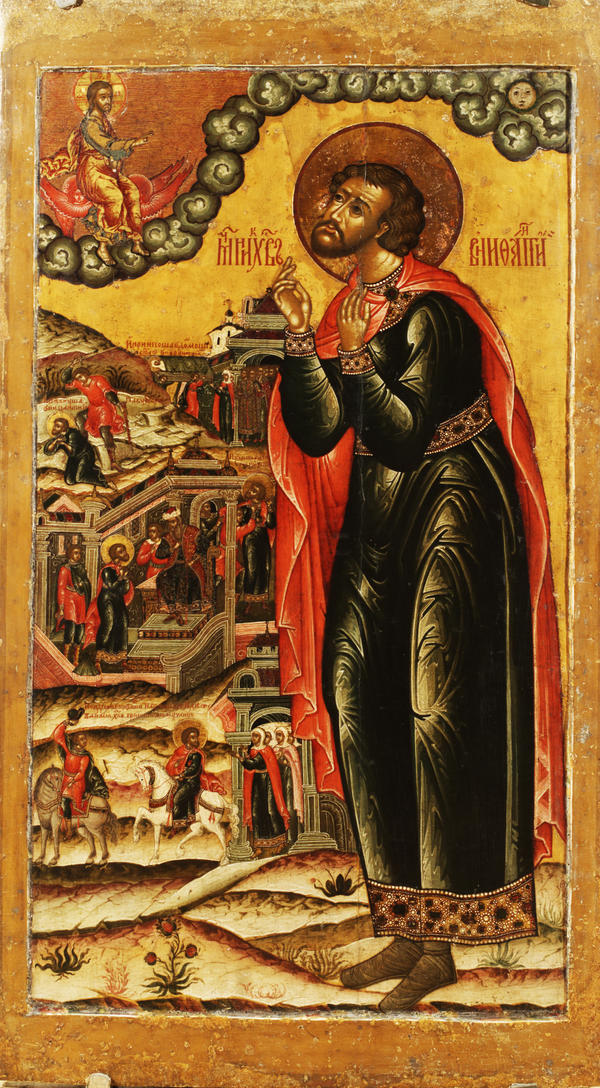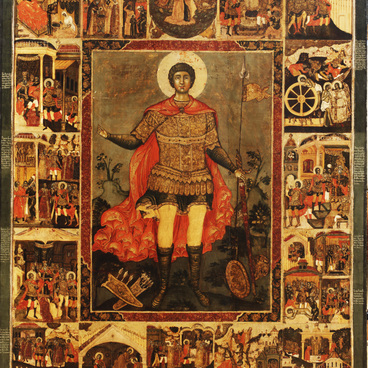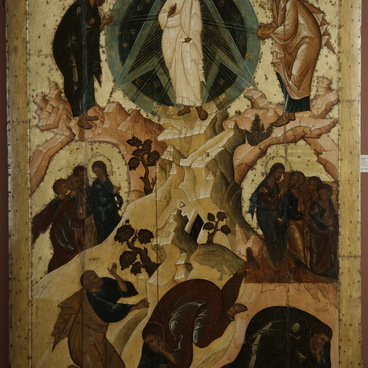The icon shows Saint Boniface in prayer before Jesus Christ who is blessing him. Presumably, the sacred image was painted in the late 1680s and was commissioned by Ulita Skripina, the widow of the rich merchant from Yaroslavl Vonifaty Skripin – St. Boniface (called Vonifaty in Russian) was his patron saint. The icon found its place in the Church of Elijah the Prophet, built in memory of the merchant. The funds for the construction were provided by the widow and brother of Vonifaty Skripin.
Saint Boniface of Rome (of Tarsus)
Creation period
The second half of the 17th century
Dimensions
126,5x71,5 cm
126х71.5 cm
126х71.5 cm
Technique
Tempera
Collection
Exhibition
2
Open in app#1
Unknown author
Saint Boniface of Rome (of Tarsus)
#5
#6
The composition and style of the holy image exhibit some features typical of the Yaroslavl icon-painting school of the second half of the 17th century. Russian hagiographical icons of that time often showed an imposing figure of a saint and small narrative images. To Boniface’s left one can see the main episodes – randomly placed and with many characters – from the saint’s life. The painter scrupulously depicted details of everyday life, architectural elements of buildings and landscapes. The tonality is dominated by a combination of various shades of brown, red and green – the colours typical of icons from Yaroslavl of those years.
#7
Boniface lived at the time of fierce persecutions of Christians and was executed in 290. He was one of the slaves and the lover of Aglaida, a rich young Roman woman; their sinful way of life weighed upon both of them. Aglaida learnt that if you had holy relics in your house and venerated them, you could find salvation. She sent Boniface to the East with some gold to buy the relics of a martyr. According to his hagiography, St. Boniface asked Aglaida, when saying their goodbyes, whether she would do honour to his body, if he himself suffered for Christ. The scene is shown at the bottom of the icon: Aglaida is holding out her arms to Boniface, while his companion is waving his hat in farewell.
Boniface went to Asia Minor, to the city of Tarsus, where he was overwhelmed to see the terrible suffering and tortures that were inflicted on Christians. He declared himself to be a Christian before the court and was sentenced to death by beheading with a sword. Boniface’s companions paid for his body and brought it to Rome. Aglaida summoned priests and paid homage to the martyr’s body. The last hagiographical image shows the church that Aglaida built in honour of Boniface, where the saint’s relics, considered to be miracle-working, were kept.
#8
Parts of the icon
#9
Yaroslavl Museum Reserve
read morehide
00:00
00:00
1x
Saint Boniface of Rome (of Tarsus)
Creation period
The second half of the 17th century
Dimensions
126,5x71,5 cm
126х71.5 cm
126х71.5 cm
Technique
Tempera
Collection
Exhibition
2
Open in app
Share



